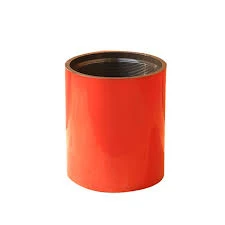- Afrikaans
- Albanian
- Amharic
- Arabic
- Armenian
- Azerbaijani
- Basque
- Belarusian
- Bengali
- Bosnian
- Bulgarian
- Catalan
- Cebuano
- Corsican
- Croatian
- Czech
- Danish
- Dutch
- English
- Esperanto
- Estonian
- Finnish
- French
- Frisian
- Galician
- Georgian
- German
- Greek
- Gujarati
- Haitian Creole
- hausa
- hawaiian
- Hebrew
- Hindi
- Miao
- Hungarian
- Icelandic
- igbo
- Indonesian
- irish
- Italian
- Japanese
- Javanese
- Kannada
- kazakh
- Khmer
- Rwandese
- Korean
- Kurdish
- Kyrgyz
- Lao
- Latin
- Latvian
- Lithuanian
- Luxembourgish
- Macedonian
- Malgashi
- Malay
- Malayalam
- Maltese
- Maori
- Marathi
- Mongolian
- Myanmar
- Nepali
- Norwegian
- Norwegian
- Occitan
- Pashto
- Persian
- Polish
- Portuguese
- Punjabi
- Romanian
- Russian
- Samoan
- Scottish Gaelic
- Serbian
- Sesotho
- Shona
- Sindhi
- Sinhala
- Slovak
- Slovenian
- Somali
- Spanish
- Sundanese
- Swahili
- Swedish
- Tagalog
- Tajik
- Tamil
- Tatar
- Telugu
- Thai
- Turkish
- Turkmen
- Ukrainian
- Urdu
- Uighur
- Uzbek
- Vietnamese
- Welsh
- Bantu
- Yiddish
- Yoruba
- Zulu
Stainless Steel Coupling for Enhanced Durability and Reliability in Fluid Connections
The Versatility and Applications of Stainless Steel Couplings
Stainless steel couplings play a crucial role in various industrial and mechanical applications, providing the essential connection between two shafts, pipes, or components. These couplings, known for their durability, resistance to corrosion, and ability to withstand high temperatures, are indispensable in many fields ranging from manufacturing to plumbing and automotive engineering.
What Are Stainless Steel Couplings?
A stainless steel coupling is a device used to connect two rigidly rotary shafts in order to transmit power. Couplings can also be used to connect pipes to facilitate fluid transfer. The use of stainless steel in the construction of these couplings adds specific advantages that make them suitable for use in harsh environments.
Key Benefits of Stainless Steel Couplings
1. Corrosion Resistance One of the most significant advantages of stainless steel is its resistance to corrosion. This feature is paramount for applications that involve exposure to moisture, chemicals, or saline environments. Couplings made of stainless steel can maintain their structural integrity over time, leading to longer service life and reduced maintenance costs.
2. Strength and Durability Stainless steel couplings exhibit high tensile strength, which allows them to handle high torque and significant mechanical loads. This toughness makes them ideal for use in heavy machinery and construction equipment that endure harsh operational conditions.
3. Temperature Resistance Stainless steel retains its mechanical properties even at elevated temperatures, making it suitable for applications in extreme heat environments. This trait is particularly valuable in industries like aerospace and automotive, where components are subjected to significant heat fluctuations.
4. Ease of Installation Stainless steel couplings are designed for easy installation, often featuring a range of sizes and configurations to suit various applications. This adaptability makes it easier for engineers and technicians to deploy suitable solutions quickly.
Applications of Stainless Steel Couplings
The applications of stainless steel couplings are extensive due to their versatility. Below are some notable uses
1. Pipelines In the oil and gas industry, stainless steel couplings are often used to connect pipelines, ensuring a secure and leak-free interface. Their ability to withstand harsh chemicals makes them a go-to choice for fluid transfer systems.
stainless steel coupling 1 2

2. Mechanical Drives In machinery and manufacturing, stainless steel couplings are crucial in connecting motors and drive shafts. They help in reducing vibration, misalignment, and shock loads, which enhances the overall efficiency and longevity of equipment.
3. Automotive Stainless steel couplings are also found in the automotive industry, where they are used in exhaust systems, fuel lines, and drivetrains. Their reliability under extreme conditions is a significant benefit in this sector.
4. HVAC Systems In heating, ventilation, and air conditioning systems, these couplings facilitate the connection of ducts and pipes, ensuring that air and fluids are effectively transported throughout buildings.
5. Marine Applications The marine industry benefits from stainless steel couplings due to their saltwater resistance. They are utilized in various marine applications, including piping systems and drive components in boats and ships.
Choosing the Right Stainless Steel Coupling
When selecting stainless steel couplings, several factors must be considered
- Material Grade Different grades of stainless steel (like 304, 316, etc.) offer varying levels of corrosion resistance and mechanical properties. It’s essential to choose the appropriate grade based on the specific application requirements.
- Size and Configuration Couplings come in various sizes and configurations. Matching the coupling’s dimensions with the shafts or pipes being connected ensures optimal performance.
- Load Capacity It's crucial to assess the load and torque requirements to select a coupling capable of handling those forces.
Conclusion
In summary, stainless steel couplings are integral components in many industries, characterized by their robust properties and versatility. Their ability to resist corrosion, withstand heat, and connect critical systems makes them an invaluable asset in maintaining operational efficiency and reliability across various applications. Whether in the realm of manufacturing, automotive engineering, or fluid transfer systems, the role of stainless steel couplings is significant and indispensable in modern engineering solutions. With their growing applications, understanding the nuances of these couplings will continue to be essential for engineers and project managers alike.
-
Tubing Pup Joints: Essential Components for Oil and Gas OperationsNewsJul.10,2025
-
Pup Joints: Essential Components for Reliable Drilling OperationsNewsJul.10,2025
-
Pipe Couplings: Connecting Your World EfficientlyNewsJul.10,2025
-
Mastering Oilfield Operations with Quality Tubing and CasingNewsJul.10,2025
-
High-Quality Casing Couplings for Every NeedNewsJul.10,2025
-
Boost Your Drilling Efficiency with Premium Crossover Tools & Seating NipplesNewsJul.10,2025







